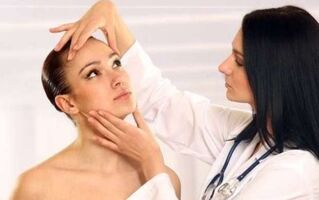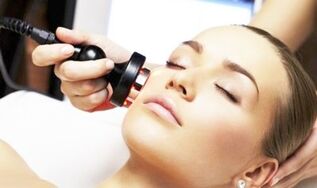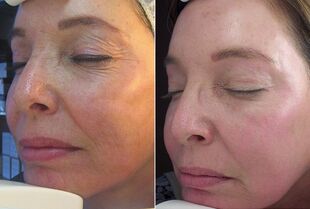For a long time, cosmetic surgery was the only way to rejuvenate. However, this method has many contraindications and is also related to certain health risks. Therefore, not all of these can be resolved by surgery. Fortunately, modern aesthetic medicine offers many less harmful anti-aging treatments. A valuable alternative to cosmetic surgery is laser cosmetic surgery.
Fortunately, modern aesthetic medicine offers many less harmful anti-aging treatments. A valuable alternative to cosmetic surgery is laser cosmetic surgery.
?
Laser lifting is a modern non-surgical method that can solve age-related skin changes. This technology aims to improve skin quality. It stimulates the regeneration process (cell renewal) and improves blood circulation in the laser-irradiated area, thereby helping to smooth wrinkles.
During the operation, natural collagen is actively produced to provide tissue elasticity. This is especially important for areas with soft skin, where various methods of skin rejuvenation are unacceptable.
The difference between laser lift and other plastic surgery and cosmetic procedures is that the procedure does not involve surgery. This operation is performed using special equipment for laser treatment. The light beam penetrates the skin and acts on weakened and dead cells.
Laser plastic surgery can be performed on men and women between the ages of 18 and 70. Usually, this procedure is only needed after the first signs of skin aging after 30 years.
Usually, a beautician will give a laser enhancement course because one course is not enough. The maximum effect may be achieved within 3 months after the last step. With proper skin care, the skin rejuvenation effect can last about three years.
Instructions for the process
Laser lifting will help solve many problems. This procedure is suitable for patients with the following problems:

- skin with drooping eyelids;
- Expression and age wrinkles;
- Dark circles and bags under the eyes;
- Obvious nasolabial folds;
- Acne scars;
- Small scars;
- Large pores;
- Unhealthy skin tone;
- The existence of age spots;
- Vascular network;
- Sagging jaw;
- Neck wrinkles.
Contraindications
Laser lifting is prohibited if the following factors exist:
- Acute inflammation and infectious diseases;
- Any tumor disease;
- Chronic diseases;
- Various blood diseases;
- Pregnancy and breastfeeding;
- HIV infection;
- Diabetes;
- Mental disorders;
- Diseases related to the thyroid;
- Epilepsy;
- Hepatitis;
- Skin diseases of any nature;
- Poor blood clotting.
Types of skin resurfacing
Currently, in the practice of beauty, laser ablation is performed using two techniques: ablative and non-ablation. The difference is that each laser uses a different type of laser.
Removal
Ablation is the most widely used laser lifting technology.The influence of the light beam is directed directly at the outer layer of the epidermis that is in constant contact with the environment.
Under the action of the laser, the dead skin layer gradually evaporates. Ablative plastic surgery is traumatic, but the results are guaranteed.
No ablation
This technology involves a laser beam that penetrates deep into the skin to stimulate the synthesis of collagen and elastin. The top layer of the skin remains intact. This laser lifting method helps to improve tissue tone, thereby improving the face.
Unlike ablation tightening (also known as "burn"), non-ablation techniques are considered more gentle. Non-ablative lifting methods are allowed to affect sensitive skin areas-eyelids and areas around the eyes.
This technique is not very popular, because many beauticians doubt its effectiveness.
Preparation process
Before performing laser lifting surgery, you must visit a beautician who will assess the overall condition of the skin and draw conclusions about the ease of surgery.To reduce the risk of side effects, you will need to pass the following tests:
- General analysis of blood and urine;
- Syphilis test;
- HIV test;
- ECG of the heart.
The doctor should also be aware of all diseases that the patient suffers.
About two weeks before the meeting, there are some simple rules to follow:
- Refuse to visit bathhouses, saunas and solariums, nor sunbathe in the sun;
- Do not consume alcoholic beverages;
- Drink antiviral drugs during a course of treatment (only as prescribed by the beautician).
Coffee and energy drinks are not recommended on the day of the meeting.
How is the plastic surgery performed?
The technique for performing laser lifting is relatively simple:

- The patient puts a medical cap or bandage on the head to pull out the hair, and then lies on the sofa.
- Next, the doctor prepares the skin: remove makeup residue and greasy secretions.
- Then apply the cooling gel on the face. For patients with very sensitive skin, anesthetic ointment can be used.
- The process is painful. Therefore, it is usually performed under local or general anesthesia.
- During the treatment, the eyes of patients must be protected by making them wear black glasses. After completing the preparatory measures, you can start the laser lifting process.
- The doctor runs a special device with a handheld device (accessory) above the patient's face, paying special attention to the problematic area and solving it carefully.
Use different equipment according to the steps used. It differs in exposure technology and beam penetration depth.
There are two types of lasers: cold lasers and hot lasers. For facelift, carbon dioxide, or diode lasers can be used.
- The carbon dioxide laser is the most powerful. Help get rid of any wrinkles and scars.
- b Effectively fight the first signs of aging. It has a mild effect on the skin surface.
- Deep skin repair with diode laser. The beam can penetrate 5-50 mm inward.
Use carbon dioxide laser for ablation and rejuvenation. Under the influence of heat, the dead cells gradually evaporate, eventually retaining new young skin.
b lasers and diode lasers are used for non-ablative facelift.The effect of the light beam is directed directly at the inner layer of the skin. It triggers the production of collagen in connective tissues, thereby promoting firmness and youthfulness of the skin.
After the operation, the beautician treats the patient's face with an antiseptic, and then applies a moisturizer or mask.
Before and after the photo
In the further part of the photo, you can see the results before and after the operation.

Rehabilitation
The duration of the recovery period depends on the surgical technique.The greater the impact, the longer it takes to fully recover the skin.
During the recovery period, skin redness, swelling and hypersensitivity reactions are common. These are the allowable consequences of laser lifting and should not cause warnings. After a few days, the symptoms will disappear on their own.
After laser lifting, the skin needs gentle care. Patients must strictly abide by the doctor’s advice and observe the following rules:
- Do not go to swimming pools, saunas, bathrooms and beaches for two to three months;
- Always use sunscreen when you go out.
- Do not use decorative cosmetics until the skin has fully recovered.
- Try to touch your face with your hands as little as possible;
- Eliminate facial massage;
- Give up bad habits;
- Follow healthy eating habits;
- Drink plenty of liquids.
After proper care and following the beautician's instructions, the results of the tightening can be seen after 7 days. The skin will become firm and healthy, wrinkles and scars will disappear. The oval shape of the face will have a uniform shape and a clear outline. After a change, the change is usually not visible.
Complications
Laser plastic surgery is considered a safe way to rejuvenate. In this process, the device will not directly contact the skin, so the risk of infection of various diseases can be minimized. Complications can occur in two situations: insufficient professionalism of the beautician, and failure of the patient to follow the rules of care.
The most dangerous side effects are:
- Herpes;
- Increase skin pigmentation;
- White head;
- Scar formation (if the hard skin formed is torn off).

























































